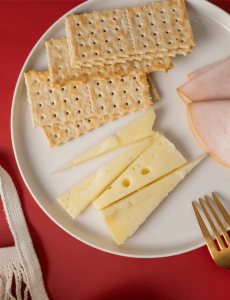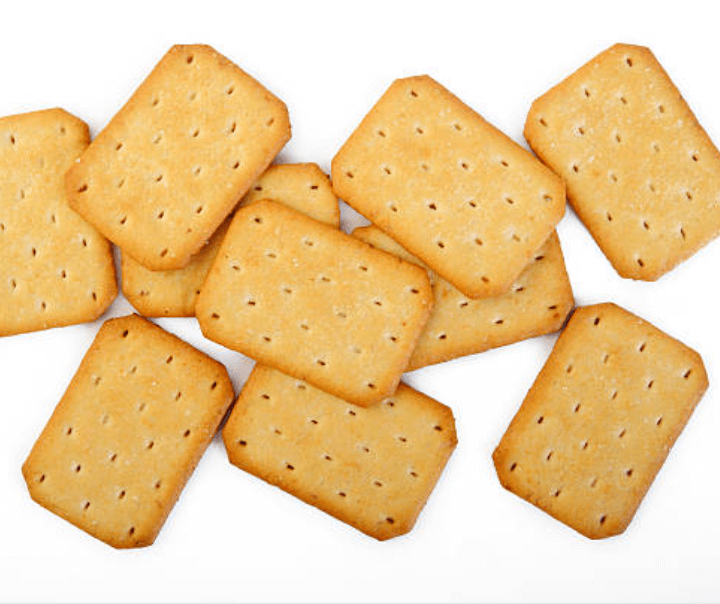Graham crackers for babies are a popular snack food for both adults and children. They are a sweet, crunchy treat that can be enjoyed on their own or used as a base for desserts like pie crusts and s’mores. But what about babies? Can babies have graham crackers? In this article, we’ll explore the nutritional value of graham crackers and determine if they are suitable for babies. We’ll also discuss when to introduce graham crackers to babies, how to prepare them, potential allergies and sensitivities, portion size and frequency, and provide alternative food options.
Can babies have graham crackers?
- Graham crackers can be introduced to babies at a certain age with caution.
- They should be prepared properly to prevent choking hazards and allergies.
- Alternatives to graham crackers are also available and should be offered to ensure balanced nutrition.
Nutritional Value of Graham Crackers
Graham crackers are made from whole wheat flour, which is a good source of fiber and complex carbohydrates. They also contain sugar, salt, and sometimes honey or cinnamon for flavor. Some brands may fortify their graham crackers with additional vitamins and minerals. In terms of nutrients, graham crackers are not particularly high in any one nutrient, but they can contribute to a balanced diet when consumed in moderation.

When considering if graham crackers are suitable for babies, it’s important to compare their nutritional needs to the nutrients found in graham crackers. Babies have different nutritional needs than adults and require a diet that is rich in protein, fat, and micronutrients like iron and calcium. While graham crackers can provide some fiber and carbohydrates, they do not offer significant amounts of these other nutrients that babies need for healthy growth and development.
Read more: >> Can babies eat cream of wheat
When to Introduce Graham Crackers to Babies
[wptb id=340]
The American Academy of Pediatrics recommends waiting until a baby is at least 6 months old before introducing solid foods. This includes snacks like graham crackers. Before this age, a baby’s digestive system is not fully developed and they may not be able to handle solid foods. Waiting until 6 months also reduces the risk of choking and other digestive problems.
Once a baby is ready for solid foods, parents can introduce graham crackers as a snack. However, it’s important to be mindful of the potential risks of giving graham crackers to younger babies. The crackers can break into small pieces that can be a choking hazard, especially if the baby is not yet able to chew properly. Additionally, the high sugar content in some graham crackers can cause digestive problems like constipation.
How to Prepare Graham Crackers for Babies
To prepare graham crackers for babies, parents can break them into small pieces or crush them into a powder. This can make them easier for babies to handle and reduce the risk of choking. It’s also important to supervise babies while they are eating graham crackers to ensure they are not putting too much in their mouths at once.
When giving graham crackers to babies, it’s important to be mindful of the potential choking hazards. Parents should avoid giving whole graham crackers to babies and should always break them into small pieces. Additionally, babies should always be seated upright while eating and should never be left unattended.
Read more: >> Can a grey baby tooth turn white again
Allergies and Sensitivities
Like any food, graham crackers can cause allergic reactions in some babies. Common symptoms of an allergic reaction include hives, swelling of the face or mouth, vomiting, and difficulty breathing. If a baby shows signs of an allergic reaction after eating graham crackers, parents should seek medical attention immediately.
In some cases, babies may also have sensitivities to ingredients in graham crackers, such as wheat or cinnamon. These sensitivities can cause digestive problems like diarrhea or gas. If a baby shows signs of discomfort after eating graham crackers, parents should consult with their pediatrician.
Graham Crackers without Honey
When it comes to introducing graham crackers into a baby’s diet, it is important to note that honey should be avoided for infants under 1 year old. This is because honey can pose a risk of botulism in this age group. Therefore, parents should opt for graham crackers without honey for their little ones.
Fortunately, there are several brands of graham crackers that are made without honey and are safe for babies to consume. One such brand is Nabisco Original Graham Crackers. These crackers are made with whole-grain wheat flour, sugar, and other ingredients, but do not contain any honey.
Another option for parents is Annie’s Organic Honey Graham Crackers. Although these crackers contain honey, the honey used in these crackers is pasteurized, making it safe for children over the age of 1 year old.
When feeding graham crackers to babies, parents should always monitor their little ones while they’re eating, especially when introducing new foods like graham crackers. Make sure you watch for any signs of choking or an allergic reaction.
Read more: >> Can babies have jello
Infant Botulism
Infant botulism is a serious illness that can affect babies. It happens when a baby ingests toxins from a type of bacteria called Clostridium botulinum. The bacteria can be found in soil, dust, and honey.
Babies are particularly vulnerable to botulism because their digestive systems are not fully developed. When the bacteria grow and produce toxins in the baby’s intestines, it can lead to muscle weakness, difficulty feeding, and breathing problems.
According to KidsHealth, parents can help prevent infant botulism by not giving their baby honey or any processed foods that contain honey, like honey graham crackers, until after their child’s first birthday. Light and dark corn syrups also might contain botulism-causing bacteria, but a link hasn’t been proven. It’s important to check with a doctor before giving these syrups to a baby.
If a baby shows signs of botulism, such as muscle weakness, a weak cry, and trouble breathing, they should be taken to the hospital immediately. With early diagnosis and proper medical care, a baby should fully recover from the illness.
Be aware of the risks of infant botulism and take steps to prevent it. By avoiding honey and other foods that may contain the bacteria, parents can help keep their babies safe and healthy.
Signs of Botulism in Babies
Infants are particularly susceptible to botulism because their immune systems are not fully developed. Here are some signs to look out for if you suspect your baby may have botulism:
- Constipation: Infants with botulism may experience constipation, which is when they have difficulty passing stools. This is because the toxin produced by the bacteria affects the muscles responsible for bowel movements.
- Poor Feeding: Babies with botulism may have difficulty feeding due to muscle weakness. This can result in poor weight gain and dehydration.
- Weakness: Infants with botulism may appear weak and lethargic. They may have difficulty holding up their head or moving their arms and legs.
- Floppy Movements: The muscles of infants with botulism may become floppy, which can make them appear limp or lifeless.
- Weak Cry: Babies with botulism may have a weak or hoarse cry due to muscle weakness in the throat and vocal cords.
If you notice any of these signs in your baby, it is important to seek medical attention immediately. Botulism can be treated with antitoxin, but early intervention is key to a successful recovery.
Do all Graham Crackers have honey?
Graham crackers are a popular snack for babies and adults alike. They are a convenient and tasty way to satisfy hunger pangs. However, not all graham crackers are created equal, and some may not be suitable for babies.
One of the main concerns when it comes to giving graham crackers to babies is whether or not they contain honey. Babies under one year of age should not consume honey due to the risk of infant botulism. Therefore, it is important to check the ingredients label before giving graham crackers to your baby.
While many brands of graham crackers do contain honey, some brands do not. For example, brands like Annie’s, Nabisco, and Keebler all make graham crackers that do not contain honey. These brands can be given to babies from six months of age.
Graham crackers that do not contain honey may still contain other sweeteners. Therefore, it is essential to read the label carefully and only give graham crackers to your baby in moderation.
Are Graham Crackers a Choking Hazard?
When it comes to introducing solid foods to babies, parents need to be aware of choking hazards. Graham crackers are one of the most popular snacks for children and adults alike, but are they safe for babies?
According to the CDC, choking is a leading cause of injury and death among children under the age of 4. Infants and toddlers are especially vulnerable to choking hazards because they are still learning how to chew and swallow food properly.
Graham crackers are a potential choking hazard for babies under the age of one. The American Academy of Pediatrics recommends waiting until a baby is at least 12 months old before introducing crackers, including graham crackers.
It is essential to note that graham crackers come in different sizes and shapes, and parents should choose age-appropriate crackers for their babies. Parents should also supervise their babies while they are eating graham crackers and be aware of signs of choking or difficulty swallowing.
Portion Size and Frequency
In terms of portion size and frequency, graham crackers should be considered a snack food for babies and not a regular part of their diet. Babies should be offered a variety of foods to ensure they get all the nutrients they need. When giving graham crackers to babies, parents should limit the portion size and frequency to avoid overloading them with sugar and other ingredients.
A good rule of thumb is to offer babies no more than 1-2 small pieces of graham crackers per day. This can be increased slightly as they get older and more accustomed to solid foods. However, parents should always be mindful of their baby’s overall diet and ensure they are getting a balance of nutrients from a variety of sources.
Alternatives to Graham Crackers
While graham crackers can be a convenient snack option for babies, there are many other safe and nutritious alternatives available. Homemade options like roasted sweet potato or carrot sticks are a great source of vitamins and minerals. Soft fruits like banana or avocado can also be mashed and served as a snack.
For babies who are starting to self-feed, small pieces of soft cheese, cooked pasta, or tofu can be a good option. These foods are easy for babies to pick up and can provide a range of nutrients. Ultimately, offering a variety of foods is the best way to ensure babies get all the nutrients they need for healthy growth and development.
Frequently Asked Questions
[sp_easyaccordion id=”410″]
Conclusion
So, can babies have graham crackers? The answer is yes, but with some important caveats. Parents should wait until their baby is at least 6 months old before introducing graham crackers and should always prepare them safely to avoid choking hazards. Additionally, parents should be mindful of potential allergies and sensitivities and limit the portion size and frequency of graham crackers to avoid overloading babies with sugar.
While graham crackers can be a convenient snack option for babies, there are many other safe and nutritious alternatives available. Offering a variety of foods is the best way to ensure babies get all the nutrients they need for healthy growth and development. By following age recommendations, preparing graham crackers safely, monitoring portion sizes, and being aware of potential allergies and choking hazards, parents can safely incorporate graham crackers into their baby’s diet.
